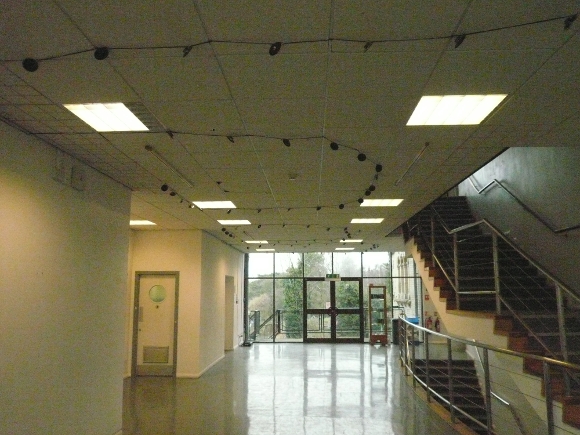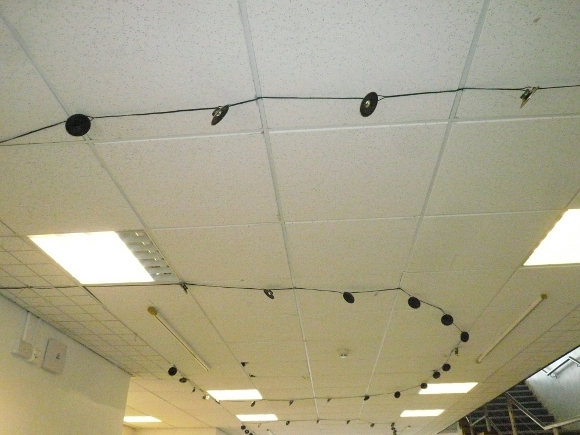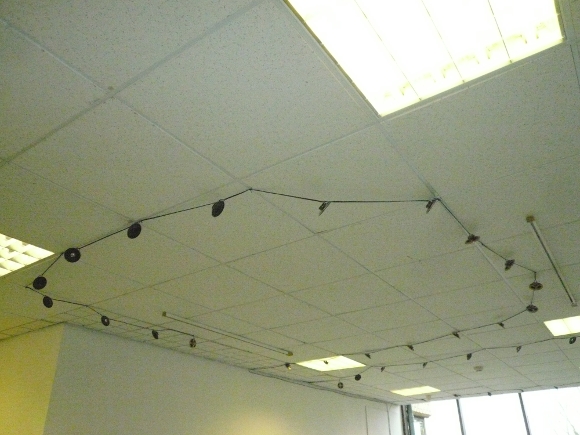|
"On the Production of Space" Technique: environmental sound recordings, piezo speakers, amplifiers, cd players
Oxford Brookes University February 27–March 3, 2012
In the installation "On the Production of Space" I wanted to examine the idea of a space (in this case the foyer of the Richard Hamilton Building at Oxford Brookes) as defined by its daily sounds, tracing the shifting psychological, acoustic, social and temporal spaces of the building as observed by me in the form of audio recordings taken over the course of several days. Mounted on the ceiling of the foyer, four groups of twenty speakers each represent a distinct field of sound taken from different areas of the building. The speaker group nearest the entrance takes sounds recorded from directly outside the entrance to the building. The next group of speakers, as one walks further into the building, takes its sounds from the second floor. The next group after this takes sounds from the basement level and the last group of speakers, placed at the back of the foyer, uses sounds recorded from outside the rear of the building. No sounds have been recorded from the foyer as this is the point where all the sounds from the rest of the building meet (from above, from below, from outside). And so all the sounds in the installation meet here too, occasionally making their appearance like a patina across the building's daily sound spaces. These four groups of sounds shift and collide, at times melding unnoticeably with the actual sound environment of the building, at other times competing with it. On one level I see "On the Production of Space" as a means to an end, in the hope that people visiting the installation will be encouraged to return afterwards, when the speakers are gone, and experience the building and its daily tide of ever-changing spaces by simply being there and listening.On another level the installation examines the idea of the our memories of a space and how sounds reflect our interaction with that space. Where do the space of sound and the sound of a space intersect? How does sound define our sense of space? Do these sounds we hear in the installation differ from the sounds we experience in the space after the installation is gone?
|




